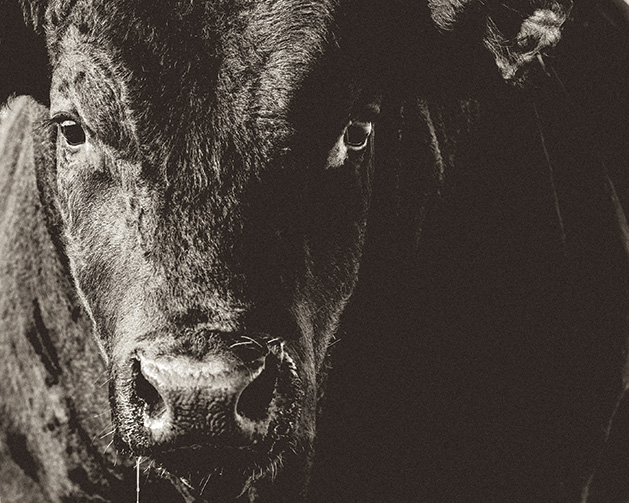
iStock/debibishop
Kowalski’s is the first multi-store retailer in the country to offer certified-humane meat.
Because Kowalski’s meat and seafood director Troy Schmeling’s goal is to ensure that their products are both humanely-produced and of top quality for the consumer, earning certification from Humane Farm Animal Care (HFAC) seemed like a natural step to take. Schmeling has worked to make Kowalski’s the first multi-store retailer in the country to offer certified-humane meat.
“Today more than ever, it’s critical to pay attention to where our food comes from and how it’s raised,” says Schmeling.
Schmeling says that while Kowalski’s has always been concerned with humane treatment of farm animals, becoming certified is new. “Kowalski’s has always gone out of their way to work with producers that are humane,” says Schmeling. There is a cost associated with being part of the certification program, so some producers follow the same standards but don’t seek out the certification, says Schmeling.
Kowalski’s signature lines of beef, lamb and chicken are all certified-humane. The store carries other lines as well. Schmeling says that even though the other lines don’t have humane-certification, they still run their farms with the ethic of minimizing suffering for the animals as much as possible.
“We’ve been out to all their farms, all their ranches. We see how they do things, and we feel good about the practices they follow,” says Schmeling.
What does “humane” mean? The answer varies between individuals. While some people don’t consume any meat, and others don’t consume any animal products whatsoever, HFAC works to provide a baseline of standards for those who choose to eat meat but are concerned with how the animals are treated.
Kowalski’s path to obtaining certification took the route of working with a supplier that was already certified-humane by HFAC—Creekstone Farms. Creekstone incorporates the principles developed by Temple Grandin, a professor of animal science at Colorado State University, a designer of livestock-handling facilities and a renowned expert in the field of livestock handling.
“Beyond it being just the right thing to do, there’s a meat quality difference. Animals that are stressed will have lactic acid build up in their muscles, and that comes out in the quality of the meat—the flavor and the tenderness. So the benefits are two-fold—peace of mind that animals that are being raised for human consumption are treated humanely, and there’s the performance aspect of the meat, how it tastes. The difference is noticeable,” he says.
Humane Farm Animal Care
HFAC was formed in 2003 by Adele Douglass, who at that time worked as a lobbyist, says Alaina Furman, HFAC’s certification program manager.
Douglass had never spent any time on farms, but she had connections with some animal welfare groups, says Furman.
“Conditions on farms can be much worse than most people believe. We all know about companion animals having terrible times in shelters, but most people don’t know about how farm animals can suffer,” says Furman.
“Adele went to visit some farms and to her surprise, she saw that farm animals had terrible conditions. She went to several different kinds of farms and realized that the problem of how the animals were treated was widespread. She knew she had to do something about it, so she cashed out her 401K and worked alongside her daughter to put together a nonprofit to help farm animals,” says Furman.
There are standards for every stage of the meat production process that must be met for a farm to receive certification from HFAC, says Furman. “If animals get sick, they must be treated. When we do audits, we look at the veterinary records very carefully. There are standards for what the animals are fed. Anesthesia has to be provided for any painful procedures the animals have to undergo. We look at how much space farm animals have in pens, procedures to minimize stress when cattle get on the trucks to the slaughter facility, standards for while the animals are on the truck like access to water and procedures for when the cattle are loaded off the truck and into the slaughter facility,” says Furman.
HFAC inspects farms once a year. Furman says that while some consumers are concerned that after the inspections are completed and the inspectors leave, all the standards will be ignored, she believes that it’s not possible for a producer to have everything up to standards for the day of inspection if they’re not regularly following them.
“We make sure we have traceability—that what’s in the end-product package came out of that farm that has the humane-certification, says Furman.
Furman says that because certification adds additional costs for producers and retailers, consumer demand is what drives companies to get certified.
“It’s commerce-driven. If consumers aren’t asking for products [that offer a higher standard of] animal welfare, farmers aren’t going to do it. A few will, but most won’t. Kowalski’s really wanted to stand for higher animal welfare products,” she says.
From the retail side, Schmeling says traceability is the focus for the certification. “As soon as the meat is received in the store, it needs to be inventoried. We have to be able to show, once that meat is wrapped, how it got there. When we receive it, we have documentation for every pound and box. We have to be able to prove that the product is what we’re labeling it as,” he says.
Kowalski’s offers consumers options for humane-certified beef, chicken and lamb. “Our goal is to have all our [animal] protein certified-humane within the next five years.
“We think our partnership with Creekstone and a couple of other producers and HFCA is a pretty good first step,” he says.
To learn more: certifiedhumane.org






















